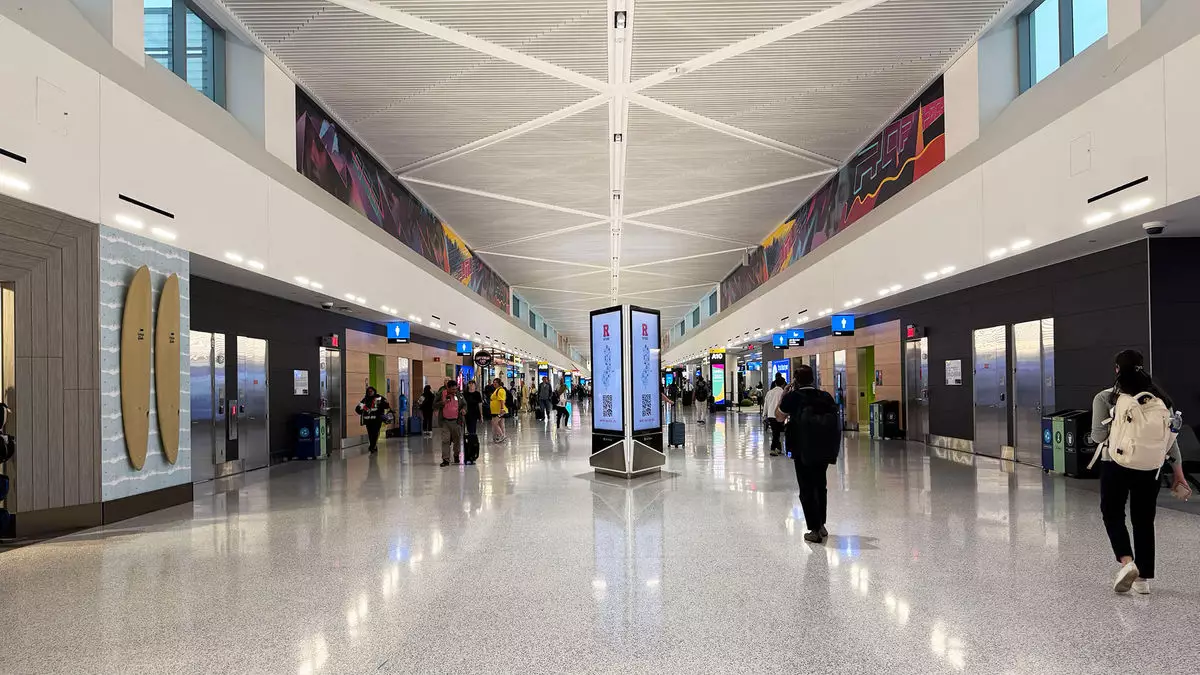Newark Liberty Airport has recently celebrated a significant milestone with the early reopening of its runway 4L-22R, a mere fortnight ahead of the projected completion date. This impressive turnaround was facilitated by the Port Authority of New York and New Jersey, illustrating their commitment to improving air traffic conditions at one of the country’s busiest airports. Given the extensive delays and disruptions that had plagued Newark during the runway’s closure, the early resumption not only brings hope for a more efficient travel experience but is also a testament to effective crisis management in aviation infrastructure.
The Challenges of Reduced Capacity
When runway 4L-22R was closed on April 15 for extensive repairs, Newark slipped into a precarious situation. The reduction to just two operational runways severely restricted the airport’s capacity, leading to a plethora of delays and inconveniences for travelers. The situation was further complicated by a notable communication blackout within Newark’s air traffic control facility, which could not have come at a worse time. This dual predicament—underlying capacity issues combined with technical malfunctions—created a perfect storm that revealed just how fragile air travel infrastructure can be, especially during peak travel seasons.
To add to the operational challenges, United Airlines, the primary carrier at Newark, responded proactively by cutting 35 flights daily to help mitigate congestion. This self-imposed adjustment signified an awareness of the need for strategic management rather than reactive measures, showcasing a collaborative effort to keep air traffic flowing as smoothly as possible under less-than-ideal circumstances.
Innovation and Intensity of Repairs
While the challenges were daunting, the Port Authority did not shy away from identifying innovative solutions to accelerate repairs. Their decision to enhance labor resources by bringing in additional crews and extending work hours to 24/7 signaled a dedicated response to a pressing logistical breakdown. Executive Director Rick Cotton emphasized this commitment by asserting that addressing Newark Liberty’s immediately evolving capacity issues prompted the acceleration of runway repairs. It’s a notable shift in approach that underscores the critical role of adaptability in public infrastructure projects.
The runway restoration was no small feat, costing approximately $128 million and involving extensive upgrades to the lighting, electrical systems, and drainage alongside the necessary milling and paving. This level of investment not only aims to resolve current obstructions but also to incorporate modern technological solutions that enhance the airport’s functionality in the long term.
Future Outlook for Newark Liberty
In light of these developments, industry leaders have expressed optimism about the future of Newark Liberty Airport. United Airlines CEO Scott Kirby indicated a promising trajectory for Newark, suggesting that the airport could emerge as the most reliable among New York’s trio of airports this summer. With significant improvements underway and changes implemented by the FAA concerning takeoff and landing management, passengers can anticipate a surge in on-time performances.
Moreover, Kirby’s remarks about the availability of seats at lower prices due to an initial reduction in bookings give rise to a unique market opportunity for travelers. The convergence of improved reliability with potentially lower fares paints a positive picture for the summer travel season. With the ability to increase capacity back to nearly 380 flights daily—while still being more streamlined than the previous year’s numbers—Newark is poised to redefine air travel in the region.
Looking Beyond Construction
The successful reopening of runway 4L-22R is just one chapter in Newark Liberty Airport’s ongoing narrative. While repairs and improvements represent a crucial component of the airport’s evolution, the emphasis must remain on sustaining these developments. The collaboration between the Port Authority, airlines, and the FAA serves as an example of how the aviation industry can adapt and respond to unforeseen challenges.
As travelers prepare for their journeys, they should remain mindful of the internal dynamics that dictate air travel experiences. Trusting that every challenge can lead to opportunities for innovation and improvement may just transform not only Newark Liberty Airport, but also the entire landscape of air travel efficiency. In this ongoing process, success lies in collaboration, adaptability, and a proactive vision that can turn adversity into opportunity.


Leave a Reply